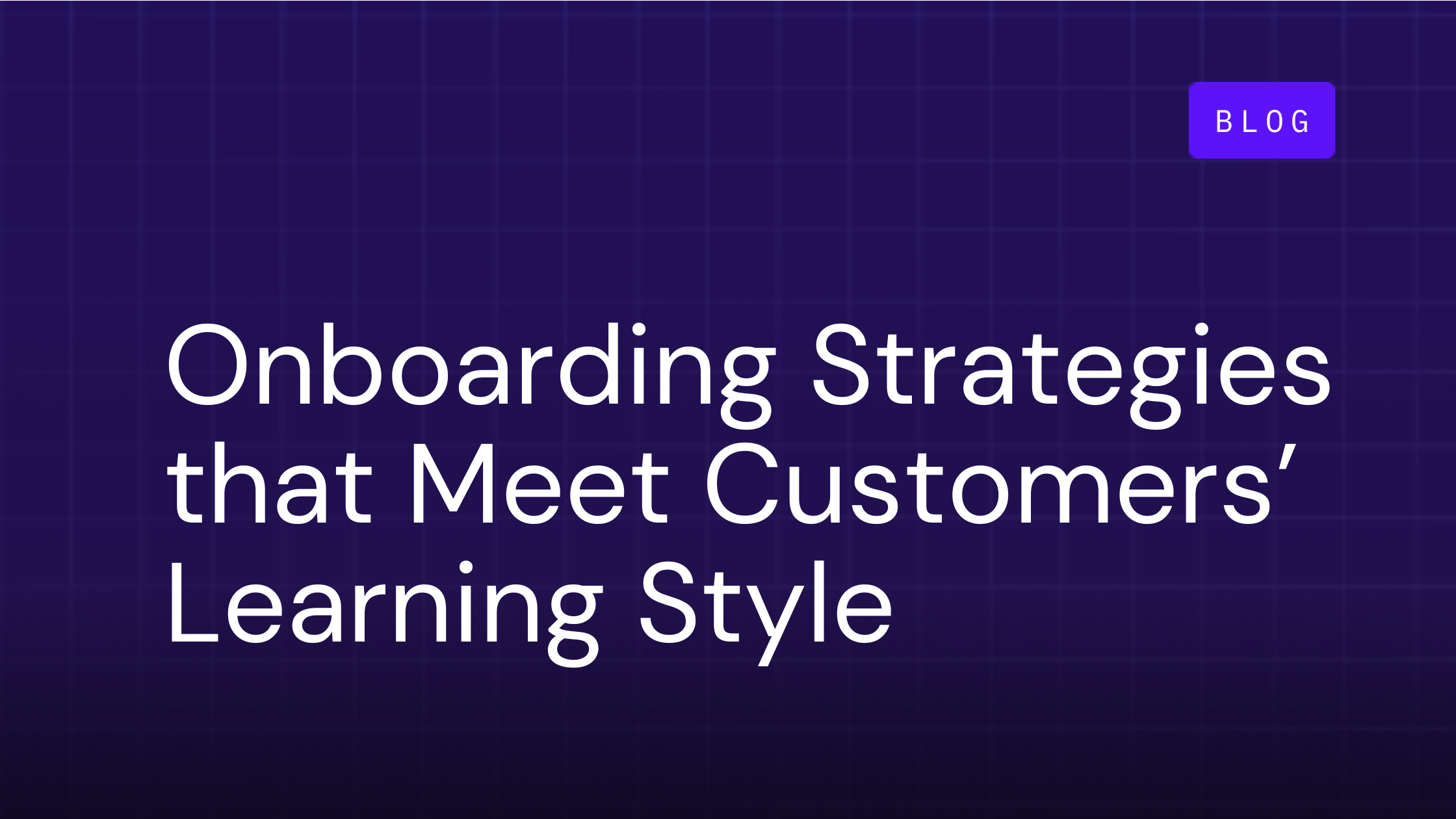Originally shared on Forbes Business Council
Your initial interactions with customers can make or break their long-term relationship with your business. When building a customer onboarding program, one size does not fit all. Just as you personalize your marketing messages and product offerings, it's essential to personalize the onboarding journey.
When a new customer signs up, they're excited but also a little apprehensive. They want to hit the ground running but are likely unsure of where to start and can be easily overwhelmed by lengthy lists and email threads. This is where understanding customers' learning styles becomes essential.
Each customer brings unique preferences, backgrounds and learning styles to the table. While one customer may prefer to learn through visual aids, another may thrive with hands-on experiences. By tailoring onboarding content and interactions to cater to diverse learning preferences, implementation teams can enhance engagement and comprehension while reducing churn and fostering stronger connections with customers.
The Different Learning Styles In Customer Onboarding
Let's dive into the different types of learners and how you can improve your onboarding experience by catering to each customer’s learning style. The most common ones are:
Visual Learning
Visual learners excel in processing information through visual aids. To effectively engage visual learners in customer onboarding, it's crucial to present information in a visually appealing manner. Utilize things like infographics, charts and diagrams to illustrate key concepts and workflows clearly. I'm also a big fan of video tutorials and screen recordings to help demonstrate product features visually.
Additionally, providing visually appealing user interfaces with clear navigation and intuitive design can enhance their experience. Always include closed captioning in videos to ensure accessibility. Breaking tasks into smaller parts and showing progress visually can help visual learners stay engaged during onboarding.
Auditory Learning
Auditory learners prefer learning through listening and verbal instruction. A few ways to engage auditory learners during customer onboarding may involve hosting Zoom meetings, as well as offering phone calls or office hours to facilitate verbal interaction and discussion. Conducting live or prerecorded webinars with opportunities for Q&A sessions is a way to cater to their preference for verbal communication.
Other strategies include offering audio guides or podcasts that narrate the onboarding process. Help auditory learners grasp complex concepts with guided walkthroughs as they interact with your product. Providing clear and concise verbal instructions in tutorials and walkthroughs is essential for their understanding and retention of information.
Kinesthetic Learning
Kinesthetic learners thrive through hands-on experiences and physical interactions. Try providing demo environments where customers can explore the product firsthand. These types of learners want to touch and feel your product rather than watch or listen to you talk about it.
Guided exercises and activities that require users to interact with the product and perform tasks encourage kinesthetic learning. Have your customers share their screens with you. This way, they can actively click through and explore the product with guidance. You can also encourage experimentation and trial-and-error by allowing customers to customize settings and preferences to their learning style. If feasible, in-person visits for show-and-do exercises can be extremely valuable.
Reading/Writing Learning
Reading/writing learners prefer to absorb information through written text and note-taking. They typically appreciate pre-work, where they can read something prior to your call with time to process and digest it before jumping into action. During customer onboarding, engage this type of learner with written materials and interactive text-based resources like comprehensive written guides, manuals and documentation for reference.
Creating a help center with support articles and email summaries or text descriptions can aid in their understanding, too. Interactive tutorials with step-by-step instructions and screenshots are a great way to cater to different learning preferences. Encourage customers to take notes during onboarding and send a summary after meetings to help them better grasp what they've learned.
Multimodal Learning
Multimodal learners benefit from a combination of different learning styles and modalities. This involves offering a range of resources and customization options. You can give customers the option to choose how they learn or personalize their onboarding experience to meet their different needs.
Offering a centralized onboarding hub with access to a variety of resources, including videos, interactive exercises and written materials, ensures that multimodal learners can engage with content in a way that suits them best.
Implementing Adapted Onboarding
Professionals with varying learning preferences process information differently, which directly impacts the effectiveness and engagement of your onboarding efforts. To excel in customer onboarding, customer success teams can adapt their strategies to accommodate these differences.
You may be asking yourself how you can do this at scale. First, you will need to get to know your customer and their learning styles through a pre-onboarding survey, as well as strong kickoff call questions. Ask them how they learn best and provide options for them to choose from to tailor their onboarding experience.
Next, utilize the power of playbook templates and module or task libraries. Create an optimized customer onboarding journey for each customer by using customizable playbooks with different modules. They work like Lego blocks that you can plug and play based on the customer’s learning style.
This doesn’t mean you have to create individual onboarding for every single customer. It means diversifying content formats, incorporating interactive elements and providing options for customers to digest information in the ways that work best for them. By doing so, businesses can ensure that every customer feels seen, heard and empowered to succeed from the start.

